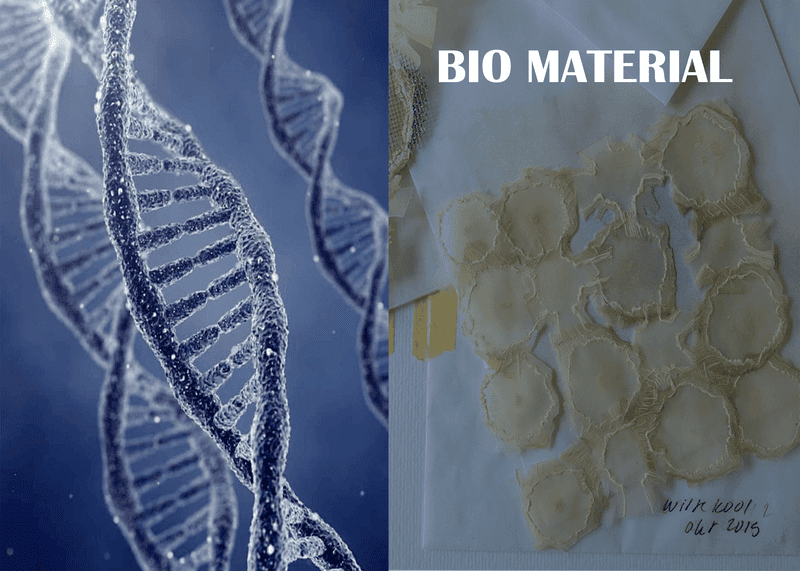ABSTRACT

In growing of fashion industry synthetic or non-biodegradable fibres plays an important role in increasing productivity and consumerism which have driven our world to disaster. As we all are aware of our accumulation of non-biodegradable waste which happens because of fashion industries. By keeping this in mind now everyone being diverted to safe our environment by Sustainable fashion. Many fields have shifted towards eco-friendly, and biodegradable which doesn’t affect our environment. And from here the fusion of biology in this industry starts.
For supporting fast fashion in our generation, we forgot to think about the environment and how is it affecting? The answer is because of synthetic fibers. People go towards clothes which go longer or can be used rough like denim but people don’t know that the use of chemical and synthetic substances, colors to broaden the life of even biodegradable fabrics. The era of synthetic is also created by us because of fast fashion. Non-biodegradable garments produced using polyester, spandex and nylon can take anyplace between 20 to 200 years to biodegrade. This article structured “How the Biomaterials come to fashion industry? “and balancing our world in a sustainability manner. And will know about some companies who are working on it.
INTRODUCTION


In the quest for a greener environment, innovative work has been channelized towards the development of biomaterials in numerous fields of science and innovation. Biomaterials are biopolymers with innumerable uses. There should be fewer nos of synthesized materials and the base source will be also from nature. Not all biomaterials are usable in natural form, and some re-designing is needed to make the biomaterial valuable. The point stays to create biomaterials useable in their natural structure, decreasing intervention of redesigned synthetic fabric. By this biomaterials are easily bio-compostable or biodegradable, destroyed by microbes when they are not in use anymore. And also, the use of synthetic plastic material can be avoided.
Biomaterials are sometimes termed as biopolymers or renewable polymers. They are generally classified as follows:-
- Polynucleotides(comprising RNA and DNA)
- Polysaccharides(chiefly containing carbohydrates)
- Polypeptides(chiefly containing amino acids)
FASHION TOWARDS BIOTECHNOLOGY
The fashion industry is seeing the beginnings of a biotechnological transformation where living creatures are being utilized to make a dress, bringing about improved and more practical materials. A new wave of innovative ideas taking us a further step towards biodegradable. The use of living microbes in dyeing, making clothes and textures allowing us to replace the highly populated process in the industry. But one demerit of these biodegradable natural structures is that it has less life span than the synthetic one. And in the fashion industry, the struggle of keeping sustainability matches the aesthetics appeal.
Biofabrication characterized as the creation of complex biologic items from crude materials, for example, living cells, grids, biomaterials, and particles. This quickly advancing innovation, has been invigorated by the advancement of 3D creation advances.
Here is the link of an international exhibition in Paris for textile innovative and fashion industry where many Biomaterials company with their innovative ideas came to show the advanced technology of the fashion industry.
https://medium.com/openbiofabrics/biofabrication-in-fashion-885d42e56655
Numerous companies around the globe are leading us to the fashion of fabrication. I researched about three organizations which driving the natural insurgency in the design field to discover more about how their innovation is changing how we make garments.
Reference links
https://vue.ai/blog/trends-and-analysis/the-rise-of-biodegradable-fashion/
https://www.fibre2fashion.com/industry-article/7574/biomaterials-in-textiles-poly-lactic-acid-fibres
https://www.labiotech.eu/industrial/biofabrication-fashion-industry/


